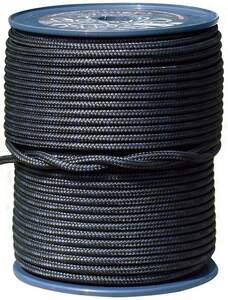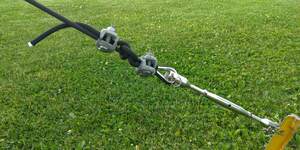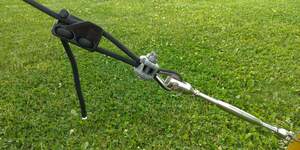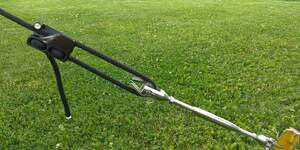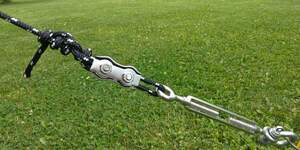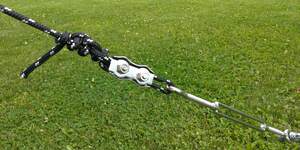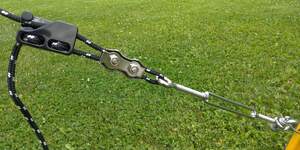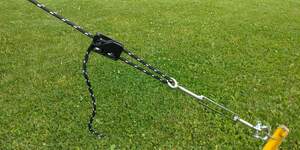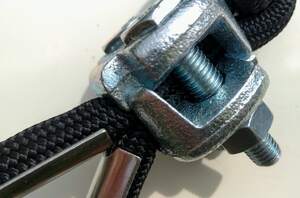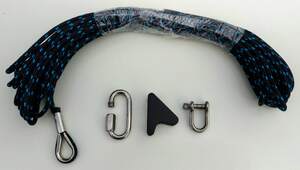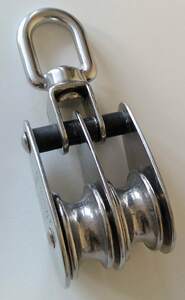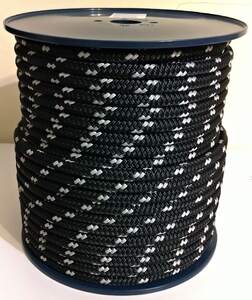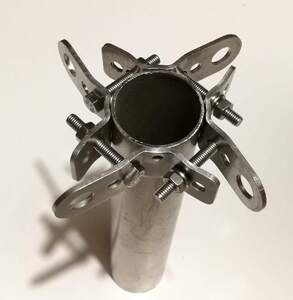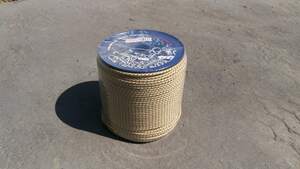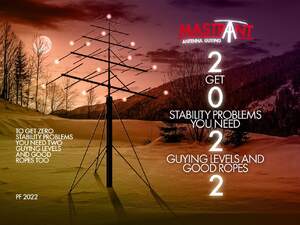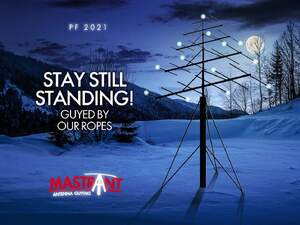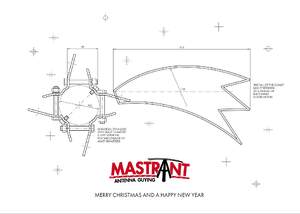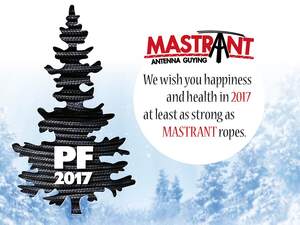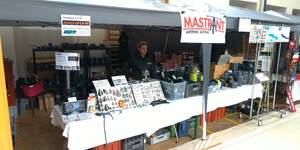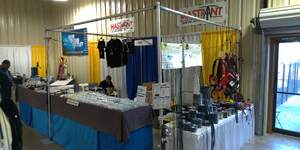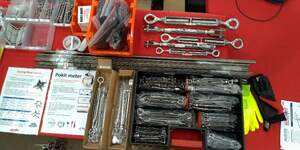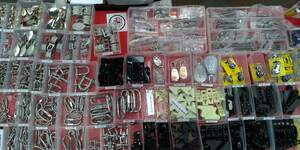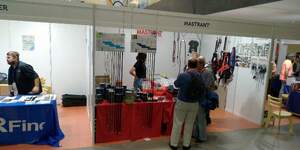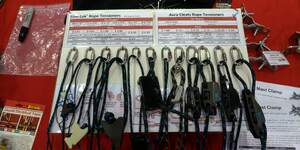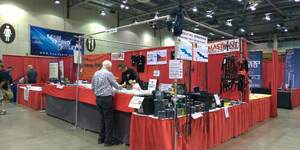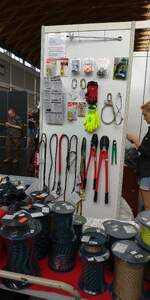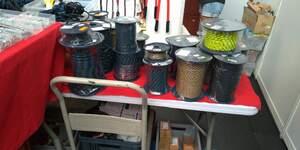What difference is there between Mastrant Classic ropes (P, Q, S, C, R) and Mastrant-M?
The difference stands in parameters. Ropes from the Classic product line are the basic ropes optimized for a good price to performance ratio, whereas type M has approximately doubled strength and simultaneously half the stretch compared to type Classic. They are also lighter because the rope core is made from high-strength Dyneema® fibers.
When is it better to use Premium rope (M) instead of Classic?
When one needs the lowest weight and wind resistance (long ropes holding wire antennas, or supporting large beam elements, or expeditions where low weight is crucial). Also when the anchor points on the ground need to be placed close to the tower (less than 50% of the anchor height – depending on the type of tower – the higher stress needs to be calculated individually) and finally, for any big towers with big antennas.
When I am looking at Dyneema ropes for maritime use, the strength eg. with 10 mm Dyneema is well over 10.000 kg, but your Mastrant M rope with a similar diameter has "only" 3850 kg strength, even the core material is the same. Can you explain why?
There may be several reasons for this difference. The first is that in Mastrant-M ropes, HMPE fibers form only the core. The braid (and any intermediate braid) is made of Polyester fibers, which have lower strength (but other necessary properties for which they are used). The reason may also be the methodology of measuring strength. Our declared breaking strength of ropes is strength really measured – each production series. It must be always 3% or higher than in our specification. There on the market is also another approach – the theoretical BS calculated based on the specification of Dyneema fiber and number of fibers (diameter). This theoretical strength is always much higher.
What difference is there between Mastrant ropes and Kevlar ropes?
Kevlar, like Dyneema®, uses high-strength fibers. While Kevlar is made from aramid the Dyneema® is made from a special sort of PET. Kevlar is not UV resistant and its fibers tend to break when bending over a small radius.
What about comparing Mastrant ropes with Phillystran?
Mastrant-P has about 80% of the strength of Phillystran of the same diameter. Mastrant-M has about 30-65% higher strength than Phillystran – but the bigger the diameter the smaller difference. Nevertheless, any Mastrant solution of any strength is many times cheaper.
Can you compare Dacron with your ropes?
Our ropes have a cover made from polyester. Polyester is a material, and it is the same material as Dacron (brand name of polyester). Construction of the rope (number of layers, number of strands, fiber angle, manufacturing process, ...) is a different story – the design of Mastrant ropes is adapted so that the abrasion resistance is as high as possible.
What makes Mastrant-M better rope for tower guys than pure Dyneema rope made for maritime use?
This question has several answers:
There are several types of Dyneema. Also, there are other producers (and brands) of HMPE ropes (the chemical principle of Dyneema). HMPE ropes are excellent, but they slightly stretch if they are in great tension for a long time. This property is called creep. This is not a problem for many applications: regular (e.g., once every 6 months) tightening does not matter, or the ropes are not permanently stressed (for example, masts where there is no permanently high tension, but only during strong winds).
In Mastrant-M we use a special version of HMPE fibers – Dyneema DM20. The biggest advantage is that it does not creep. Even though this material is much more expensive than older types of Dyneema or other HMPE fibers, stability is very important for guying so in 2013 we switched to DM20, and Mastrant-M was born.
For guying, there are usually important also mechanical features. Using two (or three in diameters 6 mm and up) layers of materials in the rope significantly increases mechanical durability. Also, pure HMPE rope is “slippery” (on touch).
If you are considering pure standard HMPE rope (Dyneema SK75, SK79, SK99, Nexsteel, ...), also consider our HMPE ropes D-F3.
What is the expected lifetime of Mastrant ropes?
Like steel ropes producers, we recommend replacing them after 5 years of use. However, we have experience with flawless 15-year-old installations.
Do I need to buy a complete reel? How long is the rope on the reel?
Standard is 100m or 200m of rope on the reel. Some diameters are 31m on the reel. However, we can deliver any length you want (ropes longer than 200m are available on special order). The ropes of standard length are cheaper. Aside from standard ropes, we offer also “ready-made” ropes with thimble compressed-in on one end.
Why don't you supply clamps with safety locking nuts?
We fully understand your concerns. In reality, if the clips are used properly – and that means properly tightened, it is not possible for the nuts to spontaneously loosen. The reason is that there is always strong counter-pressure caused by the elasticity of ropes. The fact is that the clips were designed by much smarter people than me without washers or locking nuts - and this applies to all types of rope grips. Also, we have never received any feedback that nuts were loosening when installed on the rope, on the other hand, losing nuts during transportation in a pack or pocket is quite common. My personal experience (OL5Y) proves that they will not loosen on the rope if properly tightened.
Some definitions:
SWL — Safe Working Load
WLL — (Working Load Limit
BS — Breaking Strength
SF — Safety Factor
Wikipedia details here.
Ropes and the sea salt - is it true, that in the marine air will collect sea salt in the rope braids and eventually will become conductive?
That is correct - it is true that once the rope gets wet from salt water, it can start to become partially conductive, which can affect the electrical performance of antenna systems. This is an occasional problem with insulators, by the way. However, in the 14 years of Mastrant's existence, we have satisfied hundreds of customers with antennas right on the shoreline, and as far as I know, this temporary change in conductivity has never caused a loss of satisfaction or confidence in our ropes.
Are the BAYCO monofilament ropes better than your Mastrant ropes for guywiring a tower? It looks like the Bayco do not absorbe water.
Mastrant ropes are developed for anchoring masts, and the fibres from which they are made (Polyester, Dyneema) do not absorb water in the same way as monofilament. However, water can get into the rope, which is made of thousands of individual fibres. This occurs in a situation where the rope is "loose" - if it is taut, the wetting of the inside of the rope is negligible. The essential difference in favour of Mastrant type ropes is their mechanical properties and therefore their handling, ending, tensioning etc. It is therefore impossible to decide in general terms which solution is better for anchoring antennas. We recommend asking about the experience of users of our ropes in Italy.



